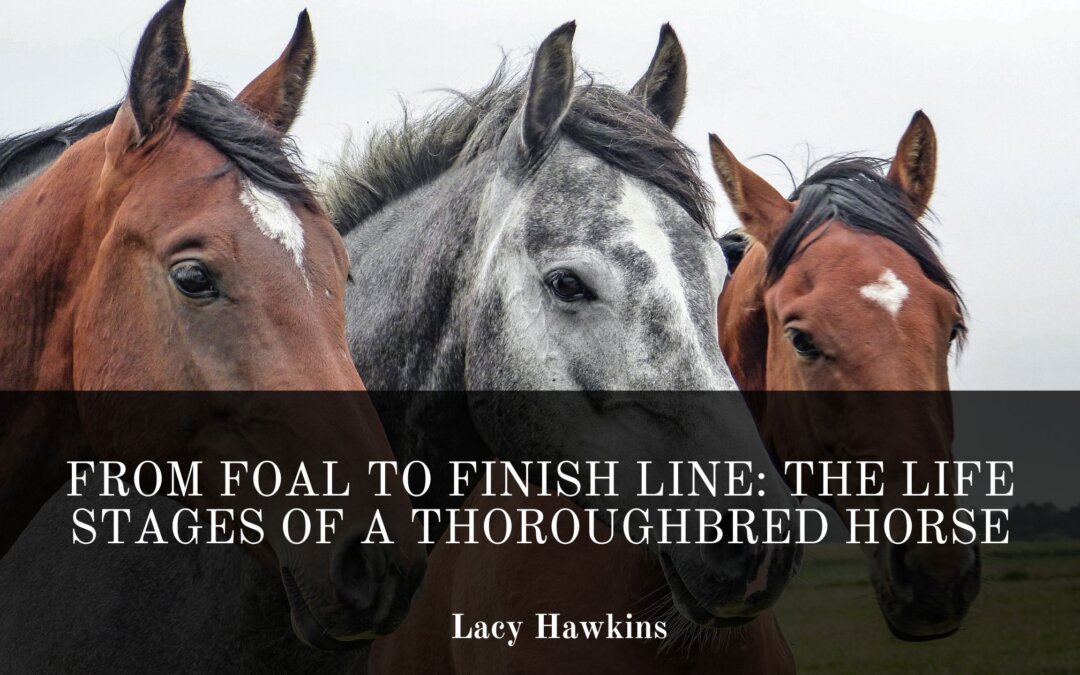Thoroughbred horses are celebrated for their grace, speed, and prowess on the racetrack. Their journey from foal to the finish line is a captivating narrative that involves distinct life stages, each contributing to their development as elite athletes. Understanding these stages provides insight into the meticulous care and training required to transform a curious foal into a powerful racehorse.
The journey begins with the birth of a foal. Thoroughbred foals are typically born between January 1 and July 1 to align with the official racehorse age determination. The initial weeks are crucial for the foal’s development as they learn to stand, nurse, and form a bond with their dam. During this time, breeders closely track the health and growth of the foal, ensuring proper nutrition and veterinary care.
As the foal matures, it enters the weanling stage, usually occurring around six months of age. Separated from the dam, the young horse learns to socialize with other foals, developing essential social skills. Adequate nutrition remains a priority during this phase, supporting the foal’s skeletal and muscular growth. Thoroughbred breeders utilize expert horsemanship to build confidence in the weanlings. This can help with building the foundation for training in the future.
Yearlings, at around one year of age, typically go through a growth spurt, which results in significant changes in their bodies. This is a critical time for bone development, and careful management is essential to prevent injuries. Yearlings are introduced to basic training, including halter breaking and basic handling, preparing them for more intensive training in the future.
The next stage is the two-year-old year, a pivotal period in a Thoroughbred’s life. At this point, horses begin serious training, honing their athleticism and responsiveness to cues. The physical demands increase gradually, emphasizing cardiovascular fitness and speed. Trainers carefully monitor each horse’s progress, adjusting training regimens to accommodate individual needs and potential.
By the time a Thoroughbred reaches its third year, it is eligible to compete in races. The three-year-old season is a highlight in a racehorse’s career, featuring prestigious events like the Triple Crown. This period showcases the culmination of years of meticulous breeding, nurturing, and training. The physical and mental maturity attained during the earlier stages contributes to the horse’s ability to handle the intensity of high-stakes racing.
As Thoroughbreds age, they continue to compete, but their racing frequency often decreases. By the age of five or six, many horses transition to a second career, such as breeding or recreational riding. This stage emphasizes the importance of a horse’s life beyond the racetrack, showcasing the versatility and adaptability of the Thoroughbred breed.
The life stages of a Thoroughbred horse—from foal to finish line—are a testament to the dedication, expertise, and passion of breeders, trainers, and caretakers. Each phase plays a vital role in shaping these majestic athletes, ensuring they are well-equipped to navigate the challenging world of horse racing and, ultimately, find success at the finish line.
